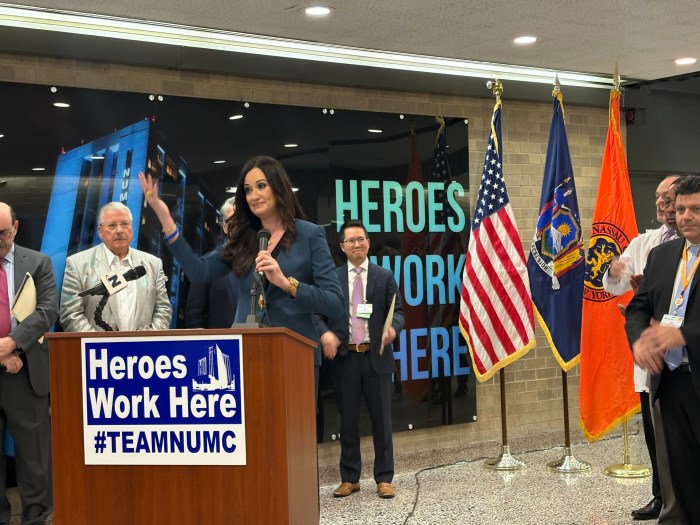Larry Silverstein’s memoir details the 20-year journey to restore the World Trade Center after 9/11
Larry Silverstein’s memoir, The Rising: The Twenty-Year Battle to Rebuild the World Trade Center (Knopf, Sept. 10), offers an inside look into the long and complex journey of rebuilding one of America’s most significant landmarks after the 9/11 attacks. Silverstein, who signed a 99-year lease on the World Trade Center just weeks before the terrorist attacks in 2001, recounts two decades of determination, challenges and triumphs in his book. The memoir chronicles not only the reconstruction of the World Trade Center complex but also the revitalization of Lower Manhattan, while honoring the memory of the nearly 3,000 victims. We had a chance to speak with Silverstein just days before the release of his book and the anniversary of 9/11.

“The experience of rebuilding the World Trade Center was filled with countless challenges,” Silverstein said, “It wasn’t just about rebuilding the towers; it was about honoring the victims, creating something that symbolized resilience and restoring the heart of downtown Manhattan.”
As the president and CEO of Silverstein Properties, Inc., Silverstein found himself navigating a labyrinth of bureaucratic red tape, political infighting and financial hurdles as he spearheaded the reconstruction efforts. The project involved working with a revolving door of public officials, including several mayors, governors and Port Authority executives. The task was as much about real estate as it was about navigating New York City politics.
“If we could have done it in less time—10 years instead of 20—it wouldn’t have cost $20 billion, Silverstein said. “But when you’re dealing with government, time is not always a relevant factor.”
Silverstein’s leadership over the past two decades is central to The Rising. In the book, he offers candid accounts of his interactions with figures like former New York Governor Eliot Spitzer, New Jersey Governor Chris Christie and Mayor Michael Bloomberg, who each played significant roles in shaping the project. Behind-the-scenes negotiations and conflicts are laid bare, as Silverstein provides a no-holds-barred account of what it took to rebuild the World Trade Center.
The book not only delves into Silverstein’s personal experiences but also highlights the broader context of the post-9/11 world. Rebuilding was about more than just putting up new skyscrapers.
“After 9/11, I looked at this and said to myself, this isn’t just an attack on the Twin Towers; this was an attack on America, on everything we stood for,” Silverstein told us. “We had to put it back, and we had to do it as quickly as possible. Otherwise, they [terrorists] would have succeeded.”
A key theme of The Rising is the sheer complexity of working on a project of such magnitude. Silverstein reflects on the difficulties posed by government bureaucracy and budget overruns, noting that the rebuild, originally estimated at around $3.2 billion, ballooned to over $20 billion.
“To date, I’ve spent close to $10 billion on the buildings, and the Port Authority has spent another $10 billion on rebuilding the infrastructure,” Silverstein told us. Despite these hurdles, the result is a restored downtown Manhattan that is vibrant, bustling with activity, and serves as a global symbol of resilience.
Silverstein is open about the emotional toll the project took, especially when meeting with families of 9/11 victims.
“Families would come to me and say, ‘You can’t build here; this is hallowed ground,’” Silverstein recounted. He grappled with these conversations but ultimately felt a responsibility to the millions of New Yorkers who relied on the economic engine that the World Trade Center had been before 9/11. “We had to put it back for New York and the country. The business activity here was crucial, and without the rebuild, this place would have become an empty field,” Silverstein said.

Silverstein reflected on the sense of personal accomplishment he feels when looking at the World Trade Center today. Living in a condominium at the top of one of the towers nearby, he often looks down and reflects on the immense progress.
“What we set out to do, we did. I think we did a very superior job,” he said. “Looking down on all this gives me a tremendous sense of accomplishment,” and then added proudly that it is his wife, Klara, who is to credit for him being able to accomplish all that he has.
In addition to being a business memoir, The Rising offers lessons in leadership, resilience and the importance of perseverance. Silverstein acknowledges that much of the project’s success is due to the dedicated teams that worked with him.
“I couldn’t have done this alone,” he emphasized. “There were so many people who worked their hearts out to make this happen.”
Though the process of rebuilding the complex took more than twice as long and cost nearly seven times the original estimate, Silverstein believes the end result is worth it.
“Time is money, but when you’re dealing with government, sometimes it feels like time is irrelevant,” he said. Still, the reconstructed World Trade Center stands as a testament to Silverstein’s vision and the resilience of New York City.
Silverstein’s memoir is not just a business account; it’s a story of personal commitment to honoring the past while building for the future. It captures the essence of a city and a country determined to rise from the ashes, stronger and more united than ever before.
“They [terrorists] attacked us to destroy what we stood for, but we proved that we’re capable of coming back stronger than before,” Silverstein concluded.
The Rising is available for purchase in bookstores and on the web.































